The birth of Pompeian red: from an eruption of Vesuvius...
On the 24th August 79 A.D. a blanket of pyroclastic materials submerged Pompeii to a height of about seven meters.
Today, during its ruins' visit, you can admire the glory of this rich Roman city. It's an orthogonal urban plan where, together with the sumptuous domus and villae, there are many infrastructure and public areas.
There is a main theme in almost all works found: it's the Pompeian red color.
The first ancient name of Pompeian red
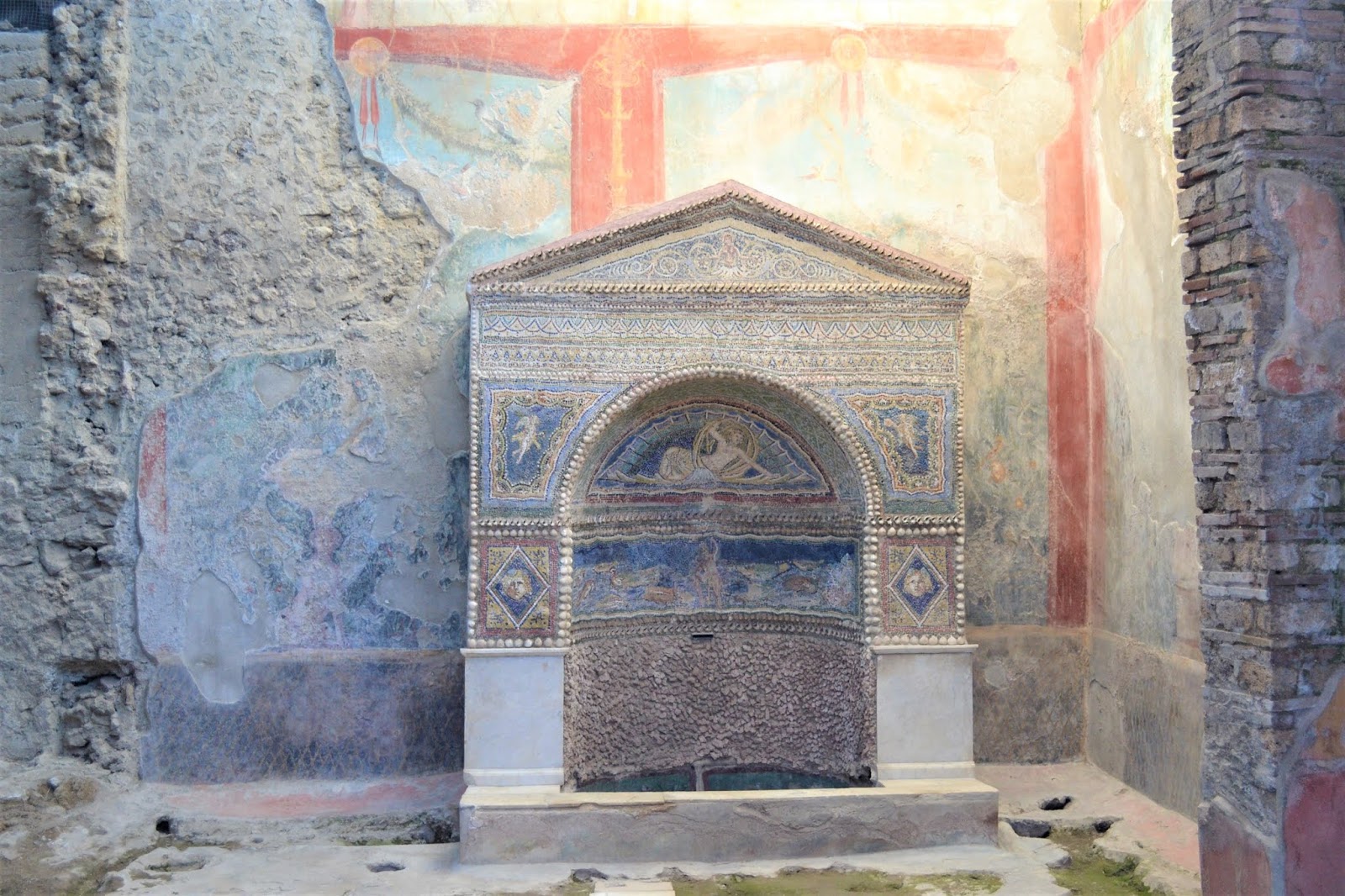
Pompeii's fontain
During the Ancient Roman times, the Pompeian red colour used to be called Sinopsis. It was especially found in Ercolano and Pompeii, probably because, thanks to the lavaflows "protection", they are the best preserved places. The name Sinopsis comes from Sinope, an ancient Turkish city where this pigment appeared for the first time.
The Pompeian red is practically a red ochre of natural origin, made of iron oxide. Today it's also known as Ercolano red, terra di Pozzuoli, English red, hematite and terra rossa di Verona.
This colour became the "trademark" of Pompeii and Ercolano ruins, because it was found for the first time in the wonderful and elegant villas of the Roman Patricians.
What's the Pompeian red pigment look like?
The Pompeian red is not only one colour but a range of colours of different red tones.
At the beginning, the inhabitants of Pompeii used to make it with the scraps of cinnabar. But because its production was expensive, it was only used as an absolute last resort. Then it was copletely replaced beacause it contains significant amounts of mercury and so toxic and harmful for the health.
Gradually, it was changed to vermillion colour (more similar to orange), red ochre, Mars red and Rosso Pozzuoli; these last two are mixtures of iron oxides and hydroxides (including the hematite).
The death sentence of Pompeian red
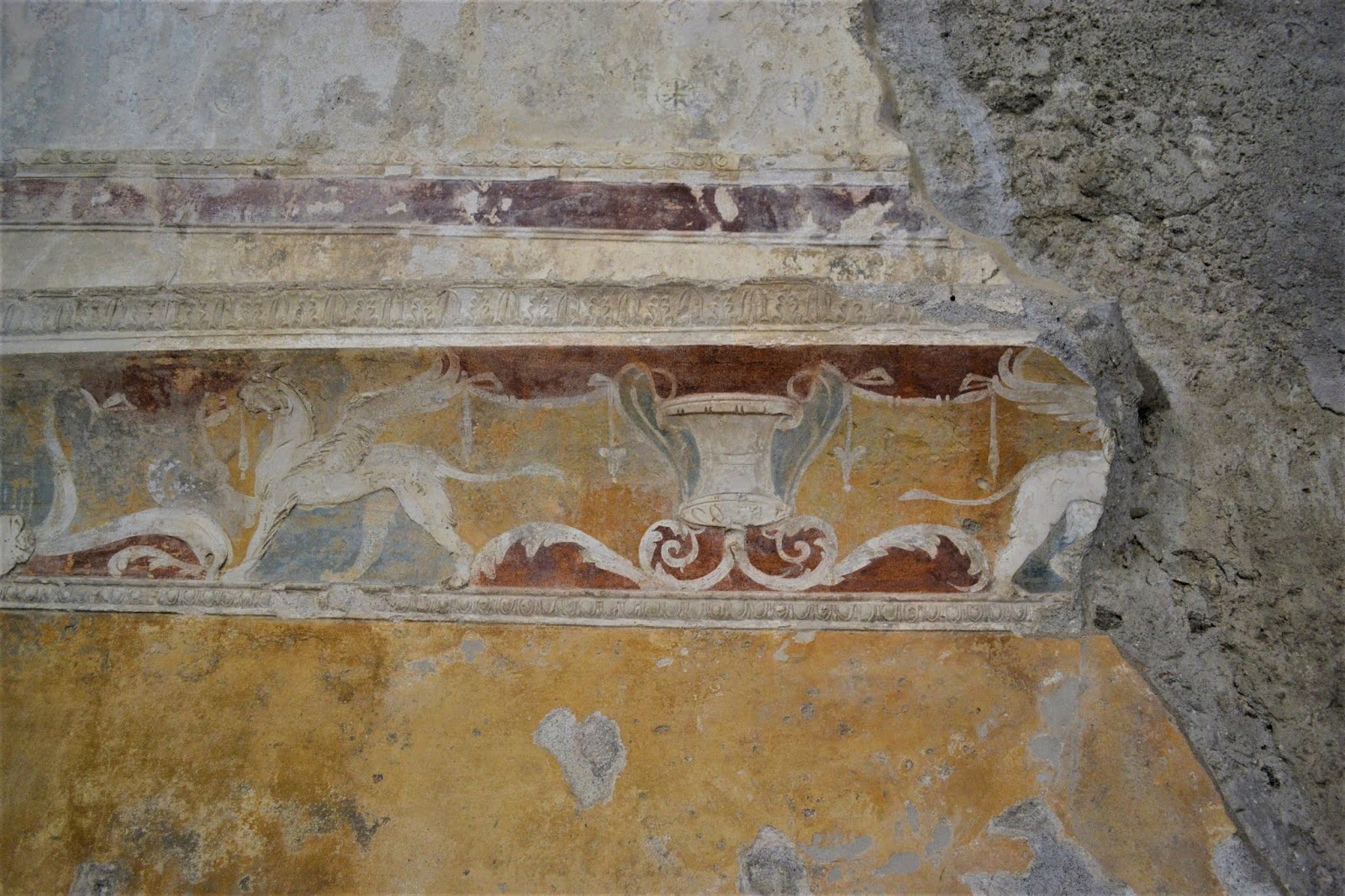
Plaster in Pompeii
The cinnabar has always been used, since the ancient times, to separate the gold from the impurities of its incorporated materials. For the Chinese alchemy it was the material of the philosopher's stone, the Greeks used it to prepare some pigments.
Considering that the Romans often used this pigment to paint their houses, it's easy to think that they didn't know about the toxicity of this material. Actually, the ancient Romans knew very well the unhealthy properties of cinnabar, indeed they used to send their slave and prisoners to work in mines in Almaden in Spain and Mount Amiata: it was a proper death sentence for the prisoners that were forced to live close to this toxic mineral.
What was the real colour of Pompeian red?
This wonderful colour is famous in the world for the walls of Pompeii and Ercolano's rooms, it's the symbol of a land and a piece of history. Actually, recent studies have revealed that the Pompeian red would be a transformation of the frescos' original colour, caused by the gas emissions produced during the eruption in 79.
The scholars say that today the walls are red bacuase of the gas and the incredible heat issued by the eruption. These eruption's effets acted on the pigment of the walls that coloured them of red. The Pompeian red is nothing more than a "roasted" yellow ochre.
Actually, this "busted myth" was already known during the ancient times. The writer Plinio, in his work, explained that by rosting the yellow ochre you can get the red. This changes forever the colour. This method was well-known by the Ancient Romans and so, most likely, some building became red after the eruption, while some already were.
Pompeian red or yellow?
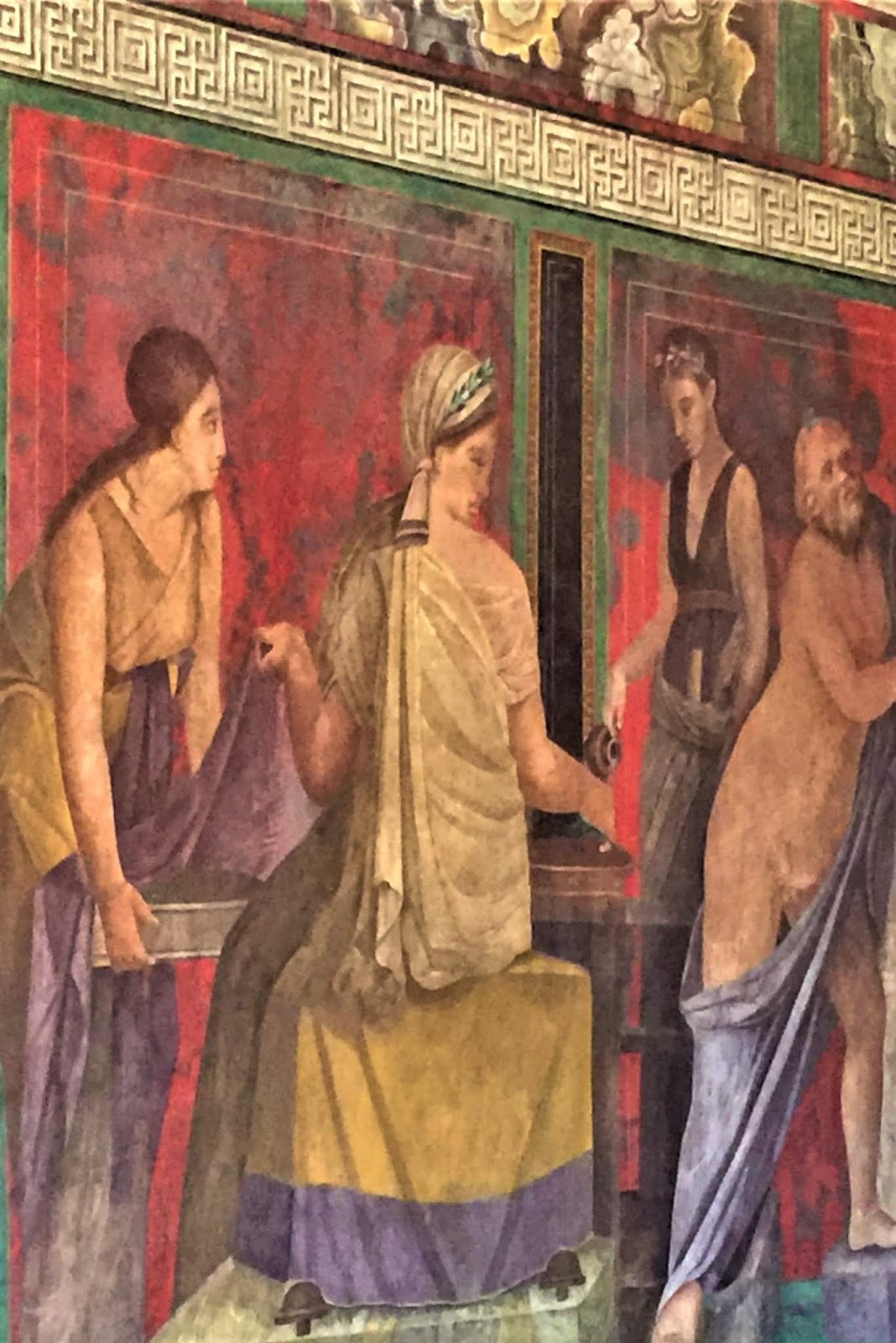
Fresco of Villa of the Mysteries
The researcher Sergio Marini said: “Today the walls collected as red are 246 and the yellow ones are 57 but, according to the results, originally they must be respectively 165 and 138, in an area of over 150 square meters”. In this way, he confirmed that many walls originally were yellow and another part of them was truly decoreted in Pompeian red even before the Vesuvius' eruption.
The choice of colours used to be based on aesthetic and usability. For example, the Fullonica of Stephanus' walls, that used to be a laundry room, originally weren't red but yellow ochre. Because of the roasting, painting the walls in red was more expensive.
Meanwhile, we can't say the same about the frescos of Villa of the Mysteries. There are nine enigmatic scenes that may repersent the stages of preparation of a bride, or the introduction of a young woman to the Dionysian rituals. Here the colour has a symbolic meaning: the mistery and the eros shown in the scenes in the Triclinium Room can only be provided by the famous "Pompeian red"!








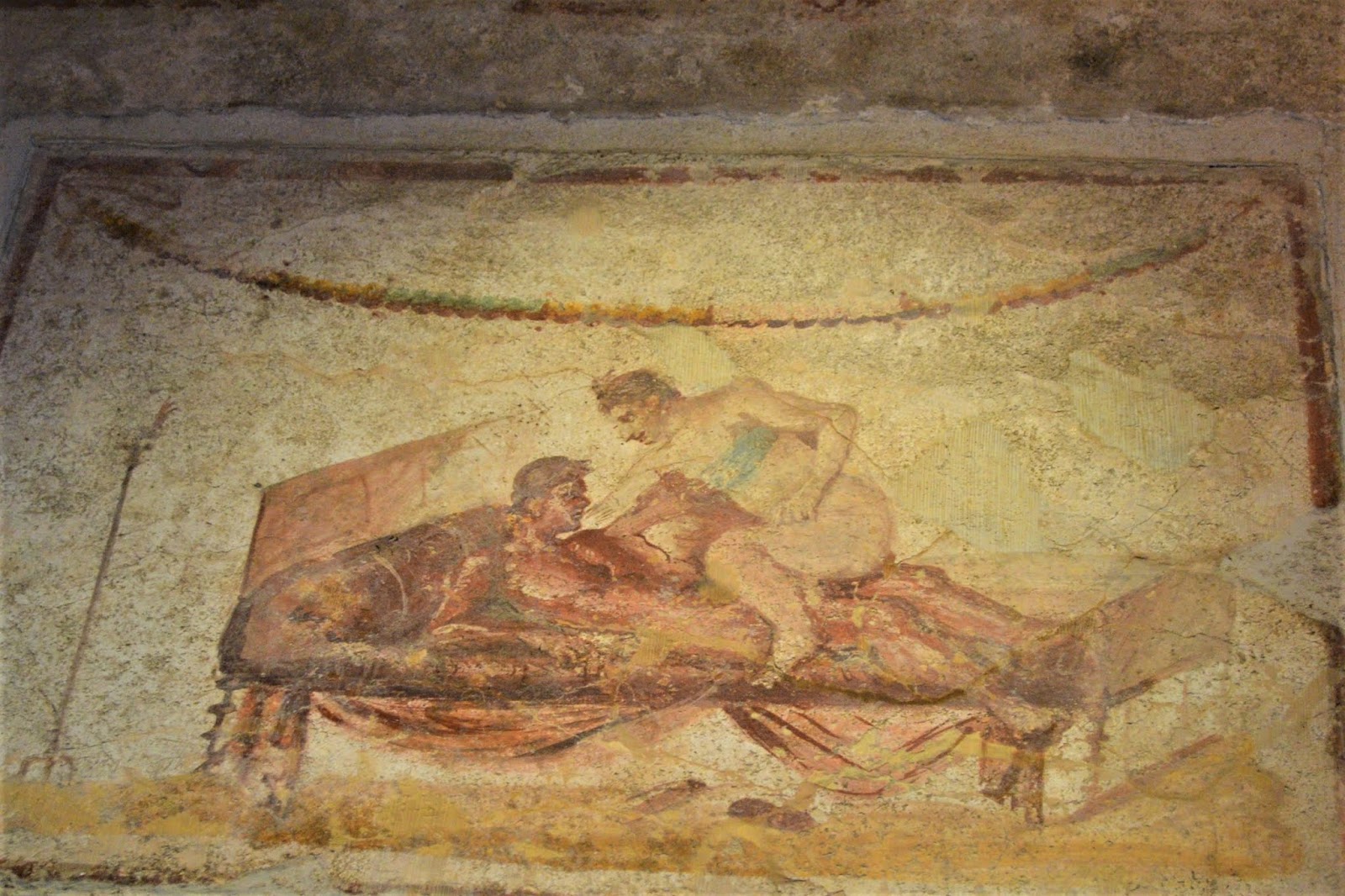
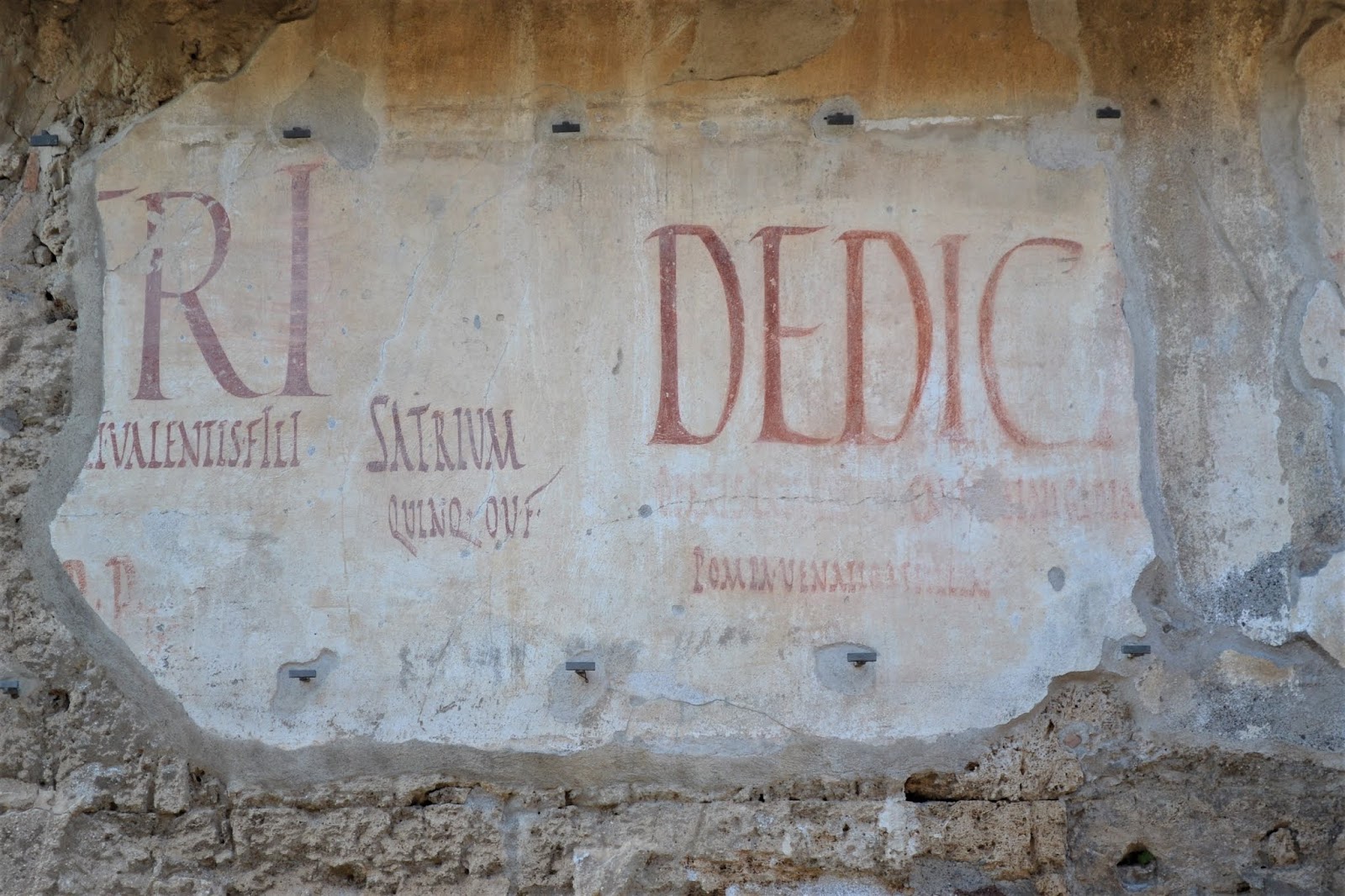


Lascia un commento